Green architecture – Manitoba Hydro Place
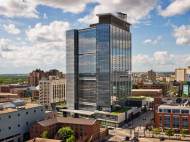 Located at 360 Portage Avenue, downtown Winnipeg, the Manitoba Hydro Place is the first and only large office tower in Canada to date to receive the LEED Platinum certification from the Canada Green Building Council (CaGBC). The building serves as a great example of climate responsive, energy efficient and sustainable design while enhancing and improving the quality and comfort of the human experience and the civility of urban life.
Located at 360 Portage Avenue, downtown Winnipeg, the Manitoba Hydro Place is the first and only large office tower in Canada to date to receive the LEED Platinum certification from the Canada Green Building Council (CaGBC). The building serves as a great example of climate responsive, energy efficient and sustainable design while enhancing and improving the quality and comfort of the human experience and the civility of urban life.
Designed by Kuwabara Payne McKenna Blumberg Architects, the 64,500 square-meter (700,000 square-feet) tower forms a capital ‘A’ composed of two 18-storey twin office towers which rest on a stepped, three-storey, street-scaled podium. Workstations and glass enclosed meeting spaces are organized into neighborhoods around each atrium to support individual and team-centered work processes. In both the north and south atria, interconnecting stairs promote physical activity, reduce reliance on elevators and provide opportunities for interaction between divisions.
Although they secured a number of parking stalls downtown, the site was strategically selected because over 95% of the bus routes pass this address, including routes to suburban Winnipeg where most of Manitoba Hydro employees live. Manitoba Hydro offered various incentives, including corporate participation in the Transit EcoPass program to encourage employee use of public transit. Since opening over 70% of the employees have adopted a healthier lifestyle, and switched to public transit instead traveling to work by car.
Dubbed an ‘Open Book’ by citizens of Winnipeg, the towers converge at the north and splay open to the south for maximum exposure to the abundant sunlight and consistently robust southerly winds unique to Winnipeg’s climate. The podium includes a publicly accessible Galleria to offer citizens a sheltered pedestrian route through the full city block. Narrow floor plates and tall floor-to-ceiling glazing allow sunlight to penetrate into the core.
Compared to the average office tower, Manitoba Hydro Place records reductions of over 70% in energy use, and achieving estimated energy savings of over $500,000 per year. A double façade curtain-wall system made of low-iron glass forms a meter (three-foot) wide buffer zone. It is comprised of a double-glazed outer wall and a single-glazed inner wall which insulates the building against both heat and cold. Automated louver shades control glare and heat gain while radiant slabs act as an internal heat exchange with the geothermal field.
Manitoba Hydro Place also has the largest closed loop geothermal system in the province. 280 boreholes, each 15 cm (6”) in diameter, penetrate the site 125 meters (400 feet) underground, circulating glycol which is cooled in the summer and heated in the winter by the ground source heat exchanger. Water is circulated through the heat exchanger and distributed through thermal mass of the concrete structure which in turn heats or cools the space consistently.
The podium rooftops feature deep soil intensive green roofs and accessible terraces, creating a lush landscaped outdoor amenity for employees, while also reducing stormwater runoff and providing additional thermal insulation. A reflective coating on the tower rooftops reduces the summer season cooling load and the urban heat island effect.
Manitoba Hydro Place is filled with fresh air instead using circulated air, regardless of outside temperatures which can vary between -35ºC (-31 ºF) to +34ºC (95 ºF) over the year. A 115-meter (377-foot) tall solar chimney marks the north elevation and main entrance on Portage Avenue, and establishes an iconic presence for Manitoba Hydro on the skyline. Two towers of the building feature a series of three, six-storey south atria, or winter gardens, which form the lungs of the building, drawing in outside air and pre-conditioning it before it enters the workspaces through adjustable vents in the raised floor.
Depending on the season, a 24-meter tall waterfall feature in each of the atria humidifies or dehumidifies the incoming air. Each feature consists of 280 individual mylar ribbons, and placed end to end, the ribbons would extend over 23km. All water features in the building were developed and designed by Dan Euser Water Architecture, based in Richmond Hill, Ontario.
During colder periods of the year, recovered heat from exhaust air, as well as passive solar radiant energy are used to warm the fresh air. The conditioned air is drawn through the raised floors into the office spaces through under floor fan units. During warmer periods of the year, the heat causes the air to rise, which is then drawn north and exhausted by the solar chimney.
For much more detailed information about the building features, visit the Monitoba Hydro Place website.

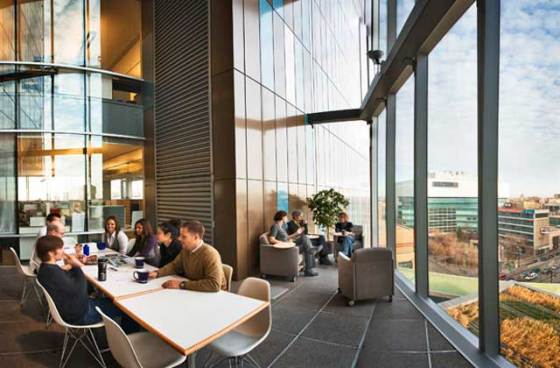
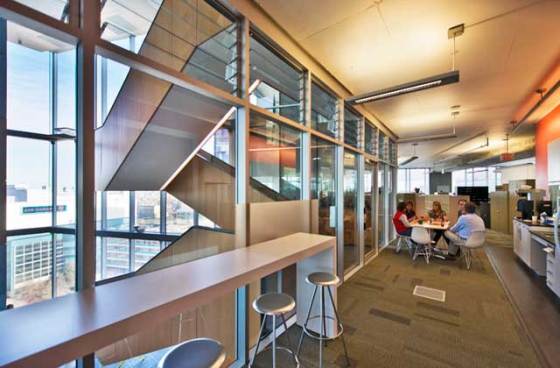
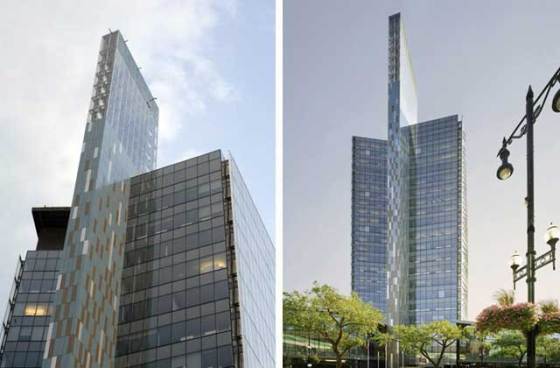
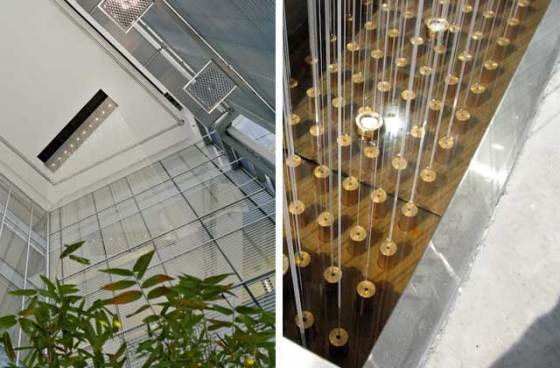
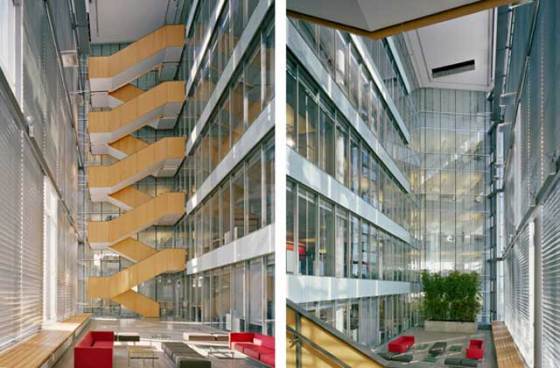








Leave your response!